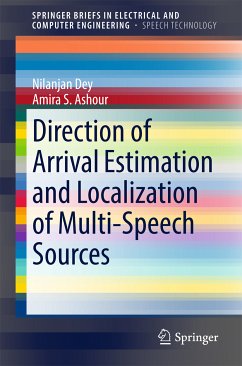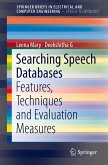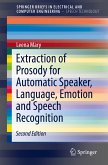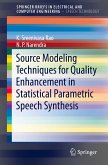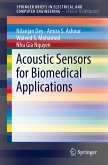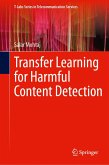Nilanjan Dey, Amira S. Ashour
Direction of Arrival Estimation and Localization of Multi-Speech Sources (eBook, PDF)
40,95 €
40,95 €
inkl. MwSt.
Sofort per Download lieferbar

20 °P sammeln
40,95 €
Als Download kaufen

40,95 €
inkl. MwSt.
Sofort per Download lieferbar

20 °P sammeln
Jetzt verschenken
Alle Infos zum eBook verschenken
40,95 €
inkl. MwSt.
Sofort per Download lieferbar
Alle Infos zum eBook verschenken

20 °P sammeln
Nilanjan Dey, Amira S. Ashour
Direction of Arrival Estimation and Localization of Multi-Speech Sources (eBook, PDF)
- Format: PDF
- Merkliste
- Auf die Merkliste
- Bewerten Bewerten
- Teilen
- Produkt teilen
- Produkterinnerung
- Produkterinnerung

Bitte loggen Sie sich zunächst in Ihr Kundenkonto ein oder registrieren Sie sich bei
bücher.de, um das eBook-Abo tolino select nutzen zu können.
Hier können Sie sich einloggen
Hier können Sie sich einloggen
Sie sind bereits eingeloggt. Klicken Sie auf 2. tolino select Abo, um fortzufahren.

Bitte loggen Sie sich zunächst in Ihr Kundenkonto ein oder registrieren Sie sich bei bücher.de, um das eBook-Abo tolino select nutzen zu können.
Provides a solid background on concept and model of the acoustics signal and sources Explores the role of optimization algorithms to improve the DOAE techniques and highlights the concept and principles of the multi-DOAE approaches Discusses several applications and real-life localization speech sources based on the DOAE approaches
- Geräte: PC
- ohne Kopierschutz
- eBook Hilfe
- Größe: 1.7MB
Andere Kunden interessierten sich auch für
![Searching Speech Databases (eBook, PDF) Searching Speech Databases (eBook, PDF)]() Leena MarySearching Speech Databases (eBook, PDF)40,95 €
Leena MarySearching Speech Databases (eBook, PDF)40,95 €![Extraction of Prosody for Automatic Speaker, Language, Emotion and Speech Recognition (eBook, PDF) Extraction of Prosody for Automatic Speaker, Language, Emotion and Speech Recognition (eBook, PDF)]() Leena MaryExtraction of Prosody for Automatic Speaker, Language, Emotion and Speech Recognition (eBook, PDF)48,95 €
Leena MaryExtraction of Prosody for Automatic Speaker, Language, Emotion and Speech Recognition (eBook, PDF)48,95 €![Source Modeling Techniques for Quality Enhancement in Statistical Parametric Speech Synthesis (eBook, PDF) Source Modeling Techniques for Quality Enhancement in Statistical Parametric Speech Synthesis (eBook, PDF)]() K. Sreenivasa RaoSource Modeling Techniques for Quality Enhancement in Statistical Parametric Speech Synthesis (eBook, PDF)40,95 €
K. Sreenivasa RaoSource Modeling Techniques for Quality Enhancement in Statistical Parametric Speech Synthesis (eBook, PDF)40,95 €![Multibiometric Watermarking with Compressive Sensing Theory (eBook, PDF) Multibiometric Watermarking with Compressive Sensing Theory (eBook, PDF)]() Rohit M. ThankiMultibiometric Watermarking with Compressive Sensing Theory (eBook, PDF)40,95 €
Rohit M. ThankiMultibiometric Watermarking with Compressive Sensing Theory (eBook, PDF)40,95 €![Acoustic Sensors for Biomedical Applications (eBook, PDF) Acoustic Sensors for Biomedical Applications (eBook, PDF)]() Nilanjan DeyAcoustic Sensors for Biomedical Applications (eBook, PDF)40,95 €
Nilanjan DeyAcoustic Sensors for Biomedical Applications (eBook, PDF)40,95 €![Transfer Learning for Harmful Content Detection (eBook, PDF) Transfer Learning for Harmful Content Detection (eBook, PDF)]() Salar MohtajTransfer Learning for Harmful Content Detection (eBook, PDF)112,95 €
Salar MohtajTransfer Learning for Harmful Content Detection (eBook, PDF)112,95 €![Advances in Audio Watermarking Based on Matrix Decomposition (eBook, PDF) Advances in Audio Watermarking Based on Matrix Decomposition (eBook, PDF)]() Pranab Kumar DharAdvances in Audio Watermarking Based on Matrix Decomposition (eBook, PDF)40,95 €
Pranab Kumar DharAdvances in Audio Watermarking Based on Matrix Decomposition (eBook, PDF)40,95 €-
-
-
Provides a solid background on concept and model of the acoustics signal and sources Explores the role of optimization algorithms to improve the DOAE techniques and highlights the concept and principles of the multi-DOAE approaches Discusses several applications and real-life localization speech sources based on the DOAE approaches
Dieser Download kann aus rechtlichen Gründen nur mit Rechnungsadresse in A, B, BG, CY, CZ, D, DK, EW, E, FIN, F, GR, HR, H, IRL, I, LT, L, LR, M, NL, PL, P, R, S, SLO, SK ausgeliefert werden.
Produktdetails
- Produktdetails
- Verlag: Springer International Publishing
- Seitenzahl: 53
- Erscheinungstermin: 23. Dezember 2017
- Englisch
- ISBN-13: 9783319730592
- Artikelnr.: 52941387
- Verlag: Springer International Publishing
- Seitenzahl: 53
- Erscheinungstermin: 23. Dezember 2017
- Englisch
- ISBN-13: 9783319730592
- Artikelnr.: 52941387
- Herstellerkennzeichnung Die Herstellerinformationen sind derzeit nicht verfügbar.
Nilanjan Day was born in Kolkata, India, in 1984. He received his B.Tech. degree in Information Technology from West Bengal University of Technology in 2005, M.Tech. in Information Technology in 2011 from the same University and Ph.D. in digital image processing in 2015 from Jadavpur University, India.
In 2011, he was appointed as an Asst. Professor in the Department of Information Technology at JIS College of Engineering, Kalyani, India followed by Bengal College of Engineering College, Durgapur, India in 2014. He is now employed as an Asst. Professor in Department of Information Technology, Techno India College of Technology, India. His research topic is signal processing, machine learning and information security.
Dr. Dey is an Associate Editor of IEEE Access and is currently the Editor in-Chief of the International Journal of Ambient Computing and Intelligence, International Journal of Rough Sets and Data Analysis, Co-Editor-in-Chief of International Journal of Synthetic Emotion, International Journal of Natural Computing Research, and Series Editor of Advances in Geospatial Technologies Book Series, Co-Editor of Advances in Ubiquitous Sensing Applications for Healthcare (AUSAH) Elsevier (Book Series).
Amira S. Ashour was born in Tanta, Egypt, in 1975. She is graduated from Faculty of Engineering, Tanta University, Egypt in 1997. She received her Master degree in Electrical Engineering in 2001from the same university and Ph.D. in smart antenna in 2005 from the Department of Electronics and Electrical Communications Engineering, Faculty of Engineering, Tanta University, Egypt.
In 2005, she was appointed as a lecturer in the Department of Electronics and Electrical Communications Engineering, Faculty of Engineering, Tanta University, Egypt. She was the Vice Chair of CS department, CIT College, Taif University, KSA from 2009 till 2015. She was the Vice Chair of Computer Engineering Department, Computers andInformation Technology College, Taif University, KSA for one year in 2015. She is now employed as an Assistant Professor and Head of Department in Department of Electronics and Electrical Communications Engineering, Faculty of Engineering, Tanta University, Egypt. Her research topics are smart antenna, direction of arrival estimation, targets tracking, image processing, medical imaging, machine learning, and image analysis.
In 2011, he was appointed as an Asst. Professor in the Department of Information Technology at JIS College of Engineering, Kalyani, India followed by Bengal College of Engineering College, Durgapur, India in 2014. He is now employed as an Asst. Professor in Department of Information Technology, Techno India College of Technology, India. His research topic is signal processing, machine learning and information security.
Dr. Dey is an Associate Editor of IEEE Access and is currently the Editor in-Chief of the International Journal of Ambient Computing and Intelligence, International Journal of Rough Sets and Data Analysis, Co-Editor-in-Chief of International Journal of Synthetic Emotion, International Journal of Natural Computing Research, and Series Editor of Advances in Geospatial Technologies Book Series, Co-Editor of Advances in Ubiquitous Sensing Applications for Healthcare (AUSAH) Elsevier (Book Series).
Amira S. Ashour was born in Tanta, Egypt, in 1975. She is graduated from Faculty of Engineering, Tanta University, Egypt in 1997. She received her Master degree in Electrical Engineering in 2001from the same university and Ph.D. in smart antenna in 2005 from the Department of Electronics and Electrical Communications Engineering, Faculty of Engineering, Tanta University, Egypt.
In 2005, she was appointed as a lecturer in the Department of Electronics and Electrical Communications Engineering, Faculty of Engineering, Tanta University, Egypt. She was the Vice Chair of CS department, CIT College, Taif University, KSA from 2009 till 2015. She was the Vice Chair of Computer Engineering Department, Computers andInformation Technology College, Taif University, KSA for one year in 2015. She is now employed as an Assistant Professor and Head of Department in Department of Electronics and Electrical Communications Engineering, Faculty of Engineering, Tanta University, Egypt. Her research topics are smart antenna, direction of arrival estimation, targets tracking, image processing, medical imaging, machine learning, and image analysis.
Introduction.- Background on Acoustics/Speech Signal.- Sources Localization and DOAE Techniques.- Multi-Source Direction of Arrival Estimation Techniques. Applications of Localization and Tracking Problem of Multiple Speech Sources.- Challenges and Future perspectives in speech-sources DOAE and localization.- Conclusion.
Introduction.- Background on Acoustics/Speech Signal.- Sources Localization and DOAE Techniques.- Multi-Source Direction of Arrival Estimation Techniques. Applications of Localization and Tracking Problem of Multiple Speech Sources.- Challenges and Future perspectives in speech-sources DOAE and localization.- Conclusion.
